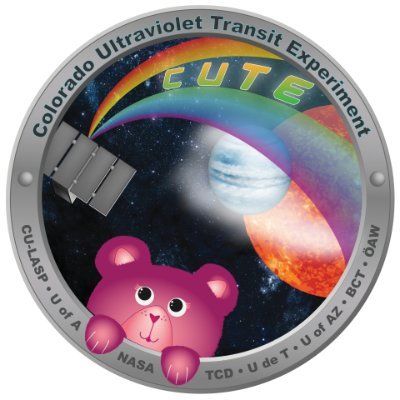Hi all,
I am an EE at the Laboratory for Atmospheric and Space Physics (LASP) at the University of Colorado Boulder (CU). I’m a member of the team that built the Colorado Ultraviolet Transit Experiment (CUTE) 6U CubeSat. Our spacecraft is launching with LandSat-9, which is slated for the end of this month (Sept. 2021). CUTE is a 6U CubeSat containing a Cassegrain telescope and near-ultraviolet (NUV, 250-330 nm) spectrograph intended for study of atmospheres of short period exoplanets. The spectrograph uses a Teledyne E2V CCD42-10 charged-coupled device (CCD) detector for imaging spectra.
I am working with the developer of gr-satellites to add support for CUTE to said software package (see this issue report), but to do so, I need a temporary NORAD ID assigned to CUTE by SatNOGS in order for my code to pass CI checks.
I wasn’t sure the right way of interacting with the Libre Space / SatNOGS community, so I filed an issue over on the SatNOGS-ops issue tracker. I haven’t yet seen a response, though it has only been a few days since I filed said issue. That issue report contains the relevant information w.r.t. transmitters (frequencies, modulations, encodings, etc.).
Please let me know if there is something else I need or should do to get CUTE into the SatNOGS DB, and thanks all for building this fantastic community and network!
Thanks,
Nick DeCicco
–
Nicholas DeCicco
Professional Research Assistant
Laboratory for Atmospheric & Space Physics
1234 Innovation Drive
Boulder, CO 80303

 this one is generated from a script and should have all of the correct types.)
this one is generated from a script and should have all of the correct types.)